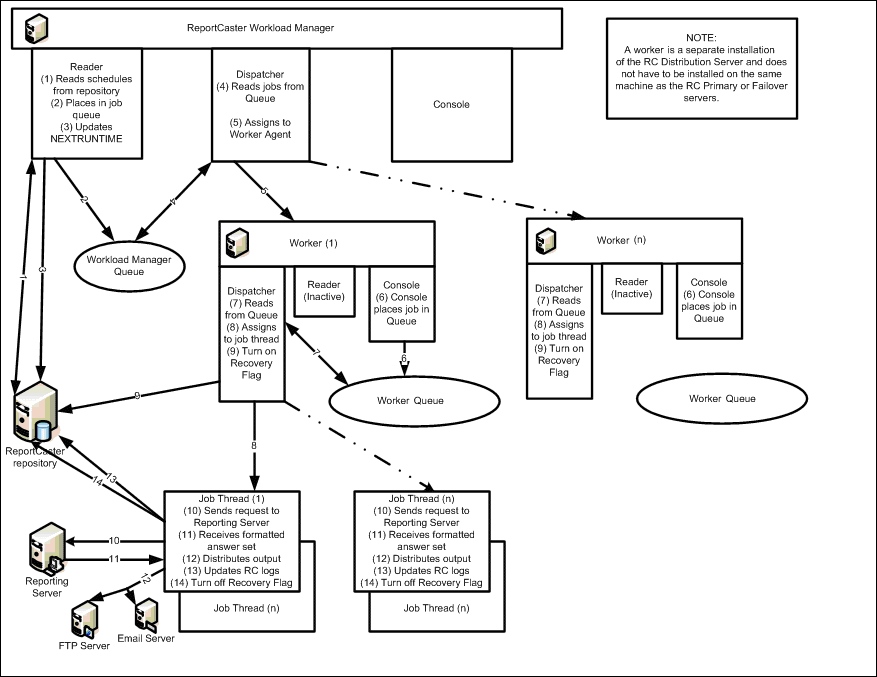Distribution Server Failover and Workload Distribution
ReportCaster provides the ability to incorporate a backup Distribution Server, and to configure two or more Distribution Servers to share the work of executing scheduled jobs.
- The Distribution
Server Failover feature enables you to configure a backup Distribution
Server that can resume ReportCaster operations when there is an interruption
(planned or unplanned) in the primary Distribution Server service.
A synchronized service monitors the primary server to verify that
it is operational. If there is an interruption in service, the monitor
triggers the failover server to take over the role of the primary
server. For details on setting up a failover Distribution Server,
see the WebFOCUS ReportCaster Post-Installation Tasks chapter in the TIBCO WebFOCUS® Installation and Configuration for Windows manual for
your platform.
The ReportCaster Console provides information, such as mode and status, on the primary and failover servers. From the ReportCaster Console, you can suspend, start, and stop the Distribution Servers.
Note: If you have the ReportCaster Server Configuration Recovery option set to On, the Distribution Server recovers scheduled jobs that were processed but not completed.
- The Workload Distribution
feature enables ReportCaster to distribute the scheduled jobs across
multiple Distribution Servers, providing an efficient and fast way to
process large numbers of ReportCaster schedules.
Multiple Distribution Server instances can be installed on one or more hosts. One instance is designated as the Workload Manager, while the others are designated as Workers. The WebFOCUS Repository will be shared by the Workload Manager and the Workers.
Note: To configure for Workload Distribution, use the ReportCaster Configuration tool settings under the Distribution Servers folder. All servers will share one set of configuration information. The Workload Manager will push any configuration changes to the Workers.
The Workload Manager will poll the WebFOCUS repository to retrieve jobs scheduled for execution and place the jobs in its queue. It will then dispatch individual jobs to the next available Worker.
The Workers will queue the jobs sent by the Workload Manager and dispatch the jobs for execution. The Workers will distribute output from the executed jobs and update the ReportCaster Log files.
The following diagram illustrates the processing and relationship between the Workload Manager and its Workers.

Distribution Server Failover can apply to the Workload Manager, which is the primary Distribution Server, but not to the Workers.
You can monitor and manage the Workload Manager and Workers through the ReportCaster Console, Server Status window.